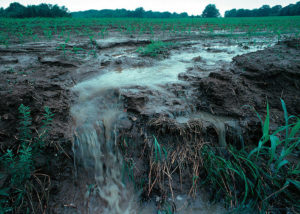By Matt Doll, Minnesota Environmental Partnership
This week, leaders in the Minnesota House and Senate formally filed their resolutions to delay Minnesota’s draft Groundwater Protection Rule after having voted to do so near the end of the 2018 Legislative Session. This unprecedented measure, if upheld by Minnesota’s court system, could put the completion of the rulemaking process on hold, delaying much-needed action to protect Minnesota’s drinking water. However, the Dayton Administration has signaled its resolve to continue moving forward, and an actual delay is anything but certain.
The proposed rule
The draft rule proposed by the Minnesota Department of Agriculture (MDA) would finally begin to implement the regulatory authority of the 1989 Groundwater Protection Act to safeguard Minnesota’s groundwater from nitrate pollution. Nitrates in our water are increasingly common and are creating an expensive health problem for Minnesota communities and well owners, many of whom spent thousands of dollars to dig new wells to avoid contaminated water. Nitrates can cause blue baby syndrome in infants and are linked to certain cancers. They originate from various sources, but the largest is fertilizer runoff from row-crop agriculture.
The MDA rule proposes a modest but important framework to reduce nitrate runoff from cropland in vulnerable areas. First, it restricts fall and winter fertilizer application on vulnerable soils that make up only 12.6% of Minnesota’s farmland. Second, it promotes voluntary best management practices to reduce nitrate levels in at-risk community wellhead protection areas, accounting for 0.45% of Minnesota’s farmland. These educational efforts can then convert to requirements if water pollution levels do not decline.
The Legislative delay (or lack thereof)
This rule has been developed with input from farmers, scientists, stakeholders, and communities across the state, and continues to be adjusted based on public comments. The Legislature’s attempt to use an obscure law to block the rule’s implementation seems designed to ultimately block the rule and thereby the reasonable water protections it would afford to thousands of Minnesotans.
Fortunately, at a press conference at the end of the session, Governor Dayton announced that he directed the state’s Commissioner of Agriculture to proceed with the rulemaking. “We don’t believe that that action is even constitutional – it’s certainly ill-advised,” Dayton said. He added, “We’re not making this stuff up. It’s about protecting the safety of Minnesotans when they turn on their faucet.”
How to speak up on the Groundwater Protection Rule
The MDA is moving forward with continued community dialogue on the rule throughout June and July, with a public comment period to close on July 26. We encourage all Minnesotans with a stake in this issue to attend one of the informational meetings or July public hearings or comment online on the rule to help ensure that it protects the public interest. Minnesota is long overdue for action to protect our precious groundwater and drinking water supplies. This rule is an opportunity to work together to ensure that all Minnesotans can feel secure when they turn on the tap.
